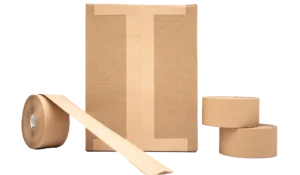Setting goals helps you stay focused, learn better, and feel proud when you complete something new. In the world of STEM (Science, Technology, Engineering, and Mathematics), this matters a lot.
But how do you set simple STEM goals for the week, especially when you are a kid or working with kids? That’s what we will walk through in this article.
Let’s start with a bit of background.
The Power of Weekly Goals in STEM Learning
STEM is all about building things, asking questions, and solving problems. This can feel overwhelming if you try to do everything at once. That is why breaking things into weekly goals is a smart idea.
Education experts have long said that small, clear goals help students stay motivated and make steady progress. According to a study by the Education Endowment Foundation (EEF) in the UK, students who set learning goals performed better than those who did not. This same idea works well in STEM.
When kids know what to focus on, like building a simple machine or learning five new science words, they gain confidence. And that confidence grows each week.
Why STEM Goals Matter for Children
Many kids say they like science or math, but without structure, they lose interest quickly. That is where goals come in.
Weekly STEM goals can keep their interest alive. A goal could be as small as “make a paper rocket” or “learn to count using Scratch.” Each goal builds up a skill, and over time, those small wins lead to bigger success. Structured learning, especially with the help of parents and teachers, helps children, especially girls, stay engaged in science and tech activities longer.
Simple Ways to Set STEM Goals for the Week
Start by asking, “What do I want to learn or build this week?” Make it something fun and doable.
Maybe you want to build a cardboard robot. Or learn how gears work. Maybe it is just watching a science video each day and writing what you learn.

Write your goal down and make a plan. For example:
Goal: Build a robot car from a kit. Monday: Read instructions. Tuesday: Build the wheels. Wednesday: Connect the wires. Thursday: Test and fix. Friday: Decorate it.
You can also use a simple journal or a printable goal tracker. At Edufun Technik, we often encourage kids in our STEM clubs to write their weekly goals and review them on Friday. It keeps everyone excited and involved.
Setting STEM Goals at Home and in the Classroom
Parents and teachers can help a lot. Ask your child or student, “What science thing would you like to try this week?” Let them choose, but help guide them.
If a child says, “I want to code,” ask, “Do you want to make a story in Scratch or create a quiz game?” Help them break it into steps.
Teachers can give each student a goal sheet every Monday. At home, parents can make Sunday evening the “STEM goal time.” Sit together, plan your week, and choose a small project.
This also teaches kids time management. They learn how to plan and stick with something.
How Teachers, Clubs, and School Supports Weekly STEM Goals
At weekly club or class meeting sessions, always start with clear goals. In one week, a group may learn how sensors work. Next, they may build something using coding blocks.
Help children set their goals, work on them during the week, and reflect on what they learned by the end of each session.
This method works. Reports have seen children who were once shy around tech become confident, creative thinkers.
In our STEM clubs, we have heard students who thought coding was hard at first, but went on to create amazing things.
Tips for Sticking to Your STEM Goals
Keep the goals short. Do not plan too many things at once. Celebrate small wins. A finished robot, a working lightbulb circuit, or a Scratch story that works all deserve praise. Talk about what went wrong. STEM is not about getting everything right. It is about testing and trying again.
As we often say,
“Once you build it, test your robot. Does it move? Does it do what you want? If not, check your wires or battery. Make changes and try again. That is how real inventors work. They build, test, and fix until everything works.”
Weekly STEM Goal Ideas You Can Try
Here are a few weekly STEM goal ideas for beginners:
- Build a paper rocket and test its flight.
- Create a rainbow using a glass of water and a flashlight.
- Make a simple Scratch animation.
- Count how many types of bugs you see in the backyard.
- Build a cardboard robot or a hand.
- Try a kitchen science experiment with vinegar and baking soda.
- Learn to type 10 new words using a fun typing game

You do not need expensive tools to do this. With cardboard, tape, an old phone, or a tablet, you can get started right now.
Start Today With a Goal for the Week
You do not have to wait for a special program or fancy lab. Start today.
Ask your child, “What STEM thing shall we try this week?” Write it down. Help them plan the steps. And then do it together.
Weekly goals are a gift. They build skills, boost confidence, and prepare children for a future where STEM will be a big part of their lives.
With a weekly goal, any child can be a scientist, coder, or inventor. Let us help them start now.







